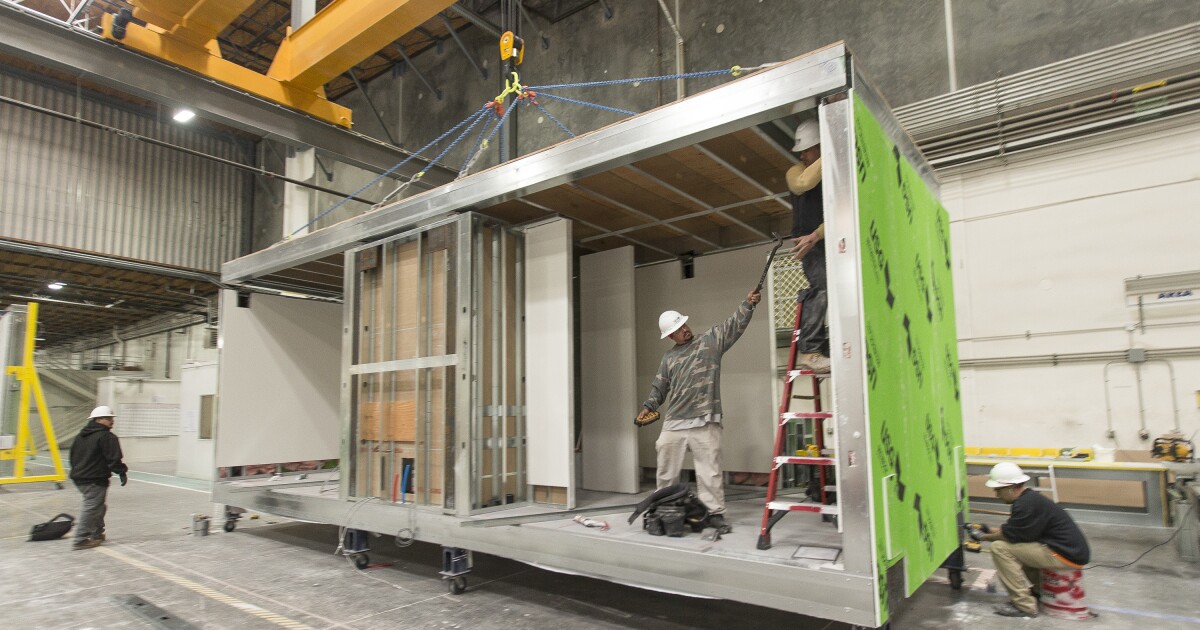
The Federal Housing Finance Agency introduced two new datasets to provide
Released quarterly, the new House Price Index and median cost report for manufactured homes will dive deeper into research of conventional mortgages acquired by Fannie Mae and Freddie Mac. The agency oversees both government-sponsored enterprises.
"FHFA's new data resource on manufactured homes provides relevant, up-to-date information on an important but less-understood segment of the housing market," said FHFA Director Sandra Thompson, in a press statement.
"In a housing market with elevated home prices, manufactured housing remains an affordable option. This new data should help advance discussions on responsible efforts to expand homeownership opportunities."
In the first release, the index increased 3.2% in the second quarter compared to the first three months of 2024. The index also surged 7.9% year over year. Reported numbers include both purchase-only data and research that adds refinance transactions into calculations. FHFA data includes price changes since 2000.
The median cost of a manufactured home also came in at $231,000 in the second quarter, FHFA reported. The number inched up 0.4% from $230,000 one year earlier. FHFA holds median manufactured housing price data dating back to early 1985.
The agency plans to release subsequent datasets each quarter alongside FHFA's long-standing House Price Index, which gives an overview of single-family home values across the United States. It anticipates releasing third-quarter numbers on Nov. 26.
The development aligns with
The latest FHFA indices follow the arrival of two other research tools the agency launched over the past month to assist investors and other stakeholders with data that inform decision-making. The climate-risk dashboard, released in early September, offers users the opportunity to identify which loans and properties
The agency followed that release with a new interactive dashboard providing details about multifamily loans the government-sponsored enterprises acquire.
FHFA's new look into factory-built housing data comes at the same time public awareness and sentiment about the manufactured-home industry grows.
A new study from real estate platform The Amherst Group this week showed 90% of consumers holding at least some favorable views of modular homes, a type of unit with components built offsite and later placed on a permanent foundation.
More than four out of five Americans, or 81%, also said they would be open to living in modular homes, while 70% said they would welcome more alternative types of properties in their communities.
"While the offsite construction process has been around for decades, it has yet to be adopted as a mainstream way to generate high-quality housing supply at scale. As a result, homebuilding remains overdue for disruption and innovation," Amherst Chairman and CEO Sean Dobson said in a press release.
"Amid ongoing supply constraints in the U.S., we think modular construction is an important part of the solution," he added.
In Amherst's survey of 1,000 people, nearly 60% of respondents also indicated they didn't care how builders constructed a home if the process had high quality standards and met price and location preferences.
A majority also cited fast construction times compared to traditional stick-built homes and flexibility in design as appealing aspects of modular units.
Many Americans, though, hold inaccurate views of modular construction. While awareness of this type of housing is growing, with two-thirds of consumers indicating they were somewhat familiar with it, 44% also thought units could move to new foundations,



